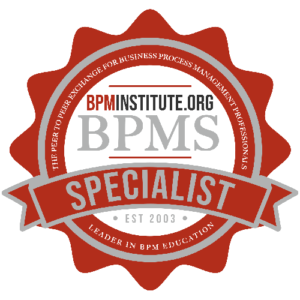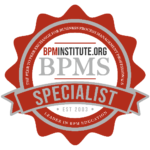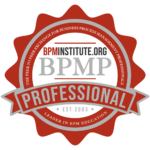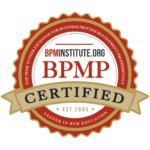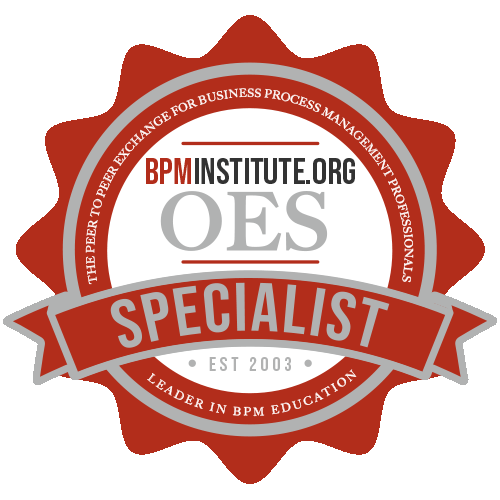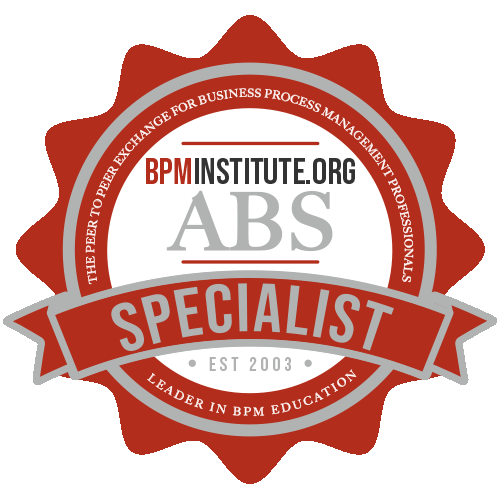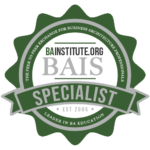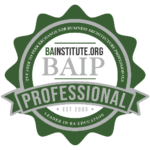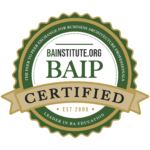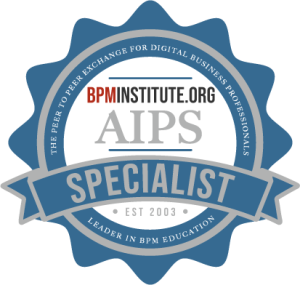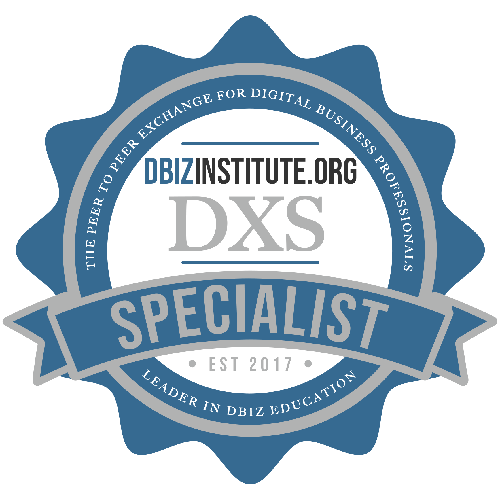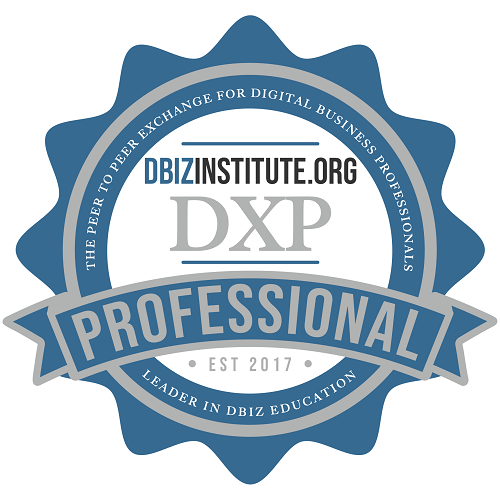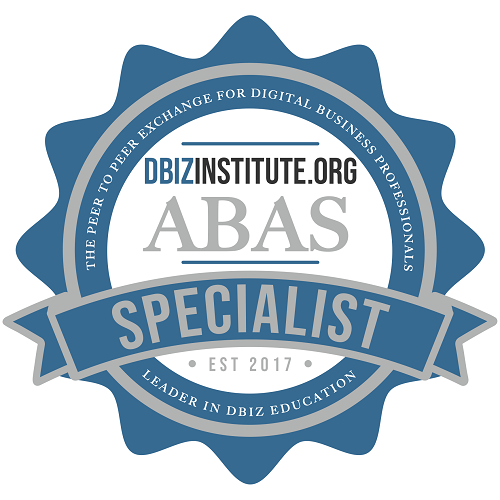Home / Resources
Resources
Discover a Wealth of BPM Knowledge and Expertise at BPMInstitute.org!

This and That 2.0: In Search of the Holy Grail of Innovation Through Collaboration
With all the hype around Web 2.0, it’s time to take a second look at how such technologies can be harnessed to help people work better together instead of hammering them with information overload. In this article we’ll explore the need for Human Interaction Management and Human Interaction Management Systems to capitalize on new technologies labeled “2.0” for innovation through collaboration. ______________________________________________________________________

Business Process Management – The Design Phase
Recently somebody asked me what some of the key reasons of failure are for new teams adopting Business Process Management or SCOR. The number one risk is obvious: lack of sponsorship. A close second however is the inability to prove the value (of the team). One of the biggest start-up problems is the focus on getting a project started – get busy. That’s really when the clock starts ticking for proving your value (Now the company is actually spending money on your great idea). Many (start-up) teams have problems getting beyond the analysis phase of a project.
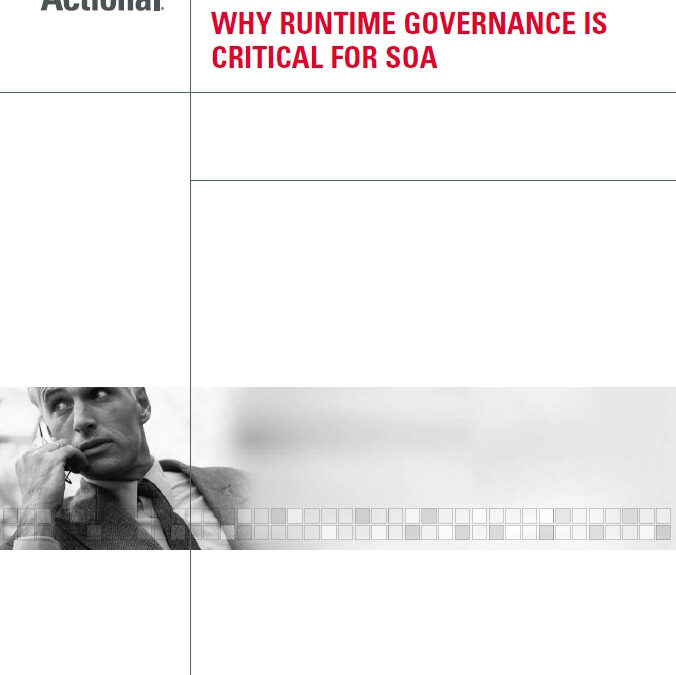
Why Runtime Governance is Critical for SOA
With SOA services now in production within many organizations, system architects are realizing that the most critical control/governance issue is in runtime. Data point after data point has demonstrated that many SOA implementations are just not working in production as designed or expected. Problems range from service interruptions to entire business processes failing, to compliance risks that generate costly delays and lengthy triage cycles. As these problems continue to pile up, runtime governance is now taking center stage for companies launching and utilizing SOAs.
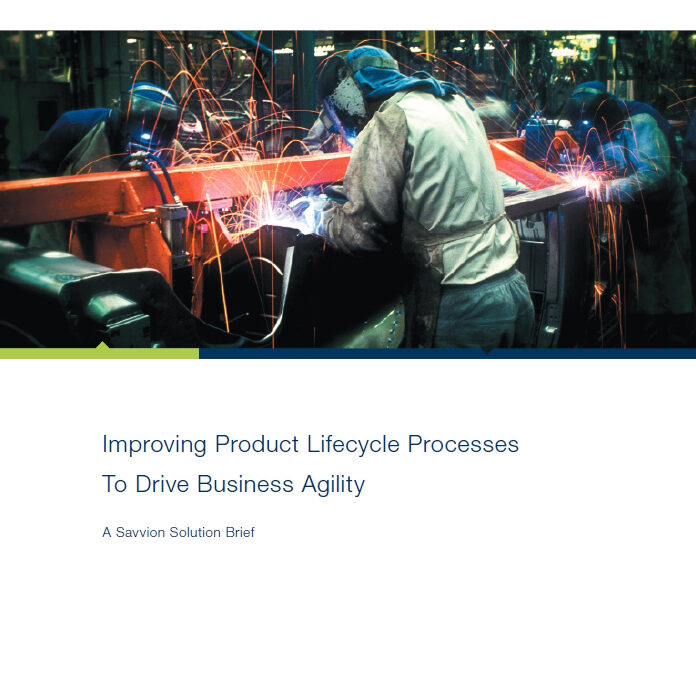
Improving Product Lifecycle Processes To Drive Business Agility
Are you a product-centric enterprise striving for agility in bringing quality goods to market faster? Do you deal with a complex value chain with multiple handoffs and contingency points? Business Process Management (BPM) solutions help companies like yours turn product lifecycle management into a competitive weapon. Download this informative solution brief now to see how leaders have transformed their order management, product planning, and channel forecasting processes to capture more customers and nimbly respond to market changes.
SOA Governance
SOA needs to be grounded in reality of making money, reducing costs and managing change. These are business imperatives. Left unchecked, SOA can become an exercise in doing very clever technical stuff for no business gain. SOA governance helps to guide IT resources to where they can be best applied. It can also help to identify areas of utility where costs can be minimised.
Ideally, it should be planned for and baked into SOA from the start.

A SOA-based Business Rules Approach: Decision Services
We have spoken often of the necessity of separating business rules from business process. For those new to business rules, consider two points:
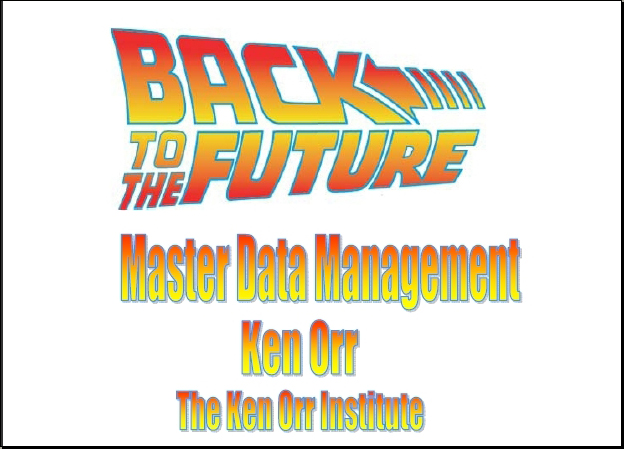
Master Data Management – Creating A Unified Business Vocabulary for SOA
Creating a unified data architecture is a key component of any enterprise SOA initiative. Rapidly building business services requires achieving a common vocabulary across disparate business systems (i.e. common definitions of “customer,” “order,” “product,” etc.).
This Round Table will explore the available approaches to enable the rapid design of such a vocabulary. The strategic agility objectives of SOA are complemented by the similar objectives employed by MDM.
Aligning Organizational Performance
Alan Ramias is a Partner of the Performance Design Lab (PDL). He has had 25 years of experience in performance improvement and organization effectiveness.
Alan Ramias is a Partner of the Performance Design Lab (PDL). He has had 25 years of experience in performance improvement and organization effectiveness. Alan joined The Rummler-Brache Group in 1991 and led major successful performance improvement engagements within Fortune 500 companies. Upon leaving RBG, Alan founded his own consulting company, where he continues to practice in the field of performance consulting. He is also involved in several organizational restructuring initiatives in the U.S. and Asia.
Ramias maintains that achieving organizational results depends on two things: measuring the right processes for performance feedback, and managers knowing what to do with the feedback they receive.

BPMS Watch: Learning to “Do” BPM
Recent research by Professor Yvonne Antonucci of Widener University turned up an amazing finding. Her survey of 146 companies involved in BPM attempted to answer the question, “Is there a gap between current and needed process skills in organizations today?” What she found was a whopping 54% of companies said they wanted to send employees to external BPM training but were “unable to find appropriate training mainly because they did not know what training was needed.”
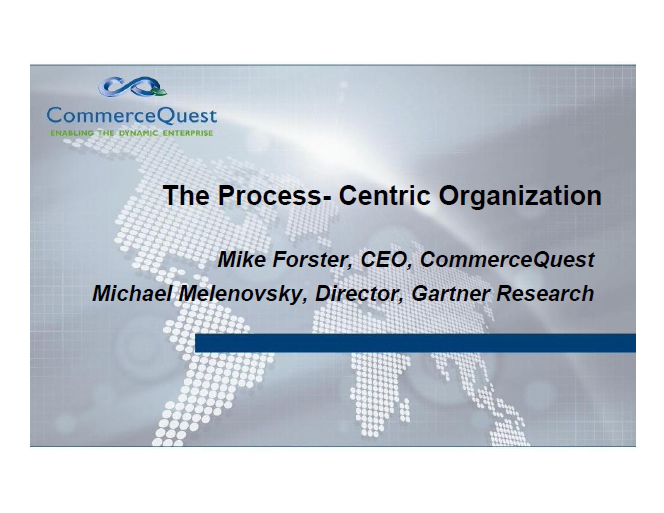
Enabling the Process-Driven Agile Enterprise
What do Business Process Management, Service-Oriented Architecture, Business Architecture, Business Rules and Organizational Performance all have in common? Well, besides the obvious…
BPMInstitute.org and SOAInstitute.org research shows that companies are planning to marshal these technologies and methodologies together into a comprehensive strategy, platform and discipline.
What do Business Process Management, Service-Oriented Architecture, Business Architecture, Business Rules and Organizational Performance all have in common? Well, besides the obvious…
BPMInstitute.org and SOAInstitute.org research shows that companies are planning to marshal these technologies and methodologies together into a comprehensive strategy, platform and discipline. One that will enable organizations to make better business decisions – more quickly – both in the short term and the long term.
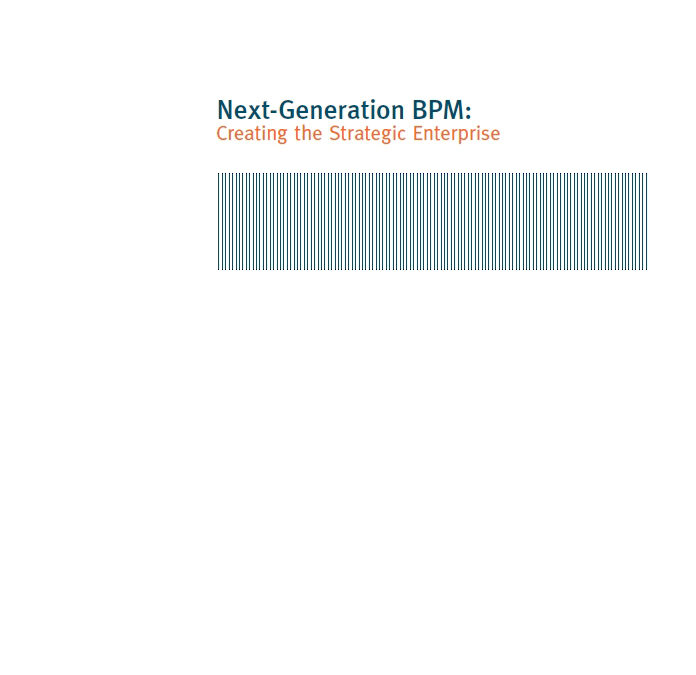
Next-Generation BPM: Creating the Strategic Enterprise
In its simplest form, business process management (BPM) is the definition, modeling, execution, automation and management of business processes. Organizations worldwide use BPM to coordinate workbetween people and systems, with the ultimate goal of improving organizational efficiency, responsiveness and reliability.
Agility in the Real World: How BPM Helps Minimize Handoffs, Improve Quality and Gets Your Goods to Market Faster
Much has been written about businesses transforming into “agile enterprises.” But beyond the pie in the sky buzzwords, what does this mean for companies striving to bring world-class goods or services to the market? In a global economy, many feel as if they are in a race to the bottom – squeezing cost out of every possible angle to support increasing competition and capture channel attention. But this doesn’t seem like the path to more innovation.

BPA Can Reduce Cost and Complexity
Though related, business process automation is not business process management, which is designed to coordinate workflow among IT systems and humans.
Business-Driven SOA
We hear about “Business Driven SOA” so much that it’s almost a cliché. And, like most clichés, we don’t really know what it means. If SOA is not that well understood, making it business driven is even more elusive. In this article, I’ll describe what business driven SOA is, and illustrate this with an example.
First, let’s start with what it’s not. It’s not web services. From the business perspective, we don’t care what technology is used to implement SOA. We can expand on this principle and say it’s not an SOA platform or product suite (sorry vendors).
Best Practices in Business Process Management
Watson says the most important thing in running a BPM pilot is to find and develop measurable results and benefits you can use. The pilot needs to directly address cycle times, unit costs, or some other meaningful information that justifies running the pilot program.
There are a number of elements to the application strategy for BPM projects. The most critical element is the current state assessment. This should not include staff functions, which have little customer impact. Large impact opportunities should be targeted, along with opportunities that are easy to prove.

Can Six Sigma and Business Process Management Co-Exist?
One of the most powerful ways to improve business performance is combining business process management (BPM) strategies with Six Sigma strategies. BPM strategies emphasize process improvements and automation to drive performance, while Six Sigma uses statistical analysis to drive quality improvements. The two strategies are not mutually exclusive, however, and some savvy companies have discovered that combining BPM and Six Sigma can create dramatic results.
After Requirements: Is the BA Done?
What is the role, if any, of the Business Analyst (BA), once the requirements are done? What happens after weeks or months have been spent eliciting and analyzing requirements for the project? Documents are finished; reviews are completed; approvals are recorded; the requirements are “done”. But, is the BA done? Not if you want high quality, cost-effective solutions.

First Thing’s First
Why is it that the “what” part of new product development gets such scant attention in the development process? What a new product should be is a question seldom seriously explored. In the world of advanced planning, the notion of “concept” is pretty narrowly constrained. True development of a new concept more often than not is ignored in favor of detailed investigation of variations on already-formed ideas introduced intact at the beginning of the process!
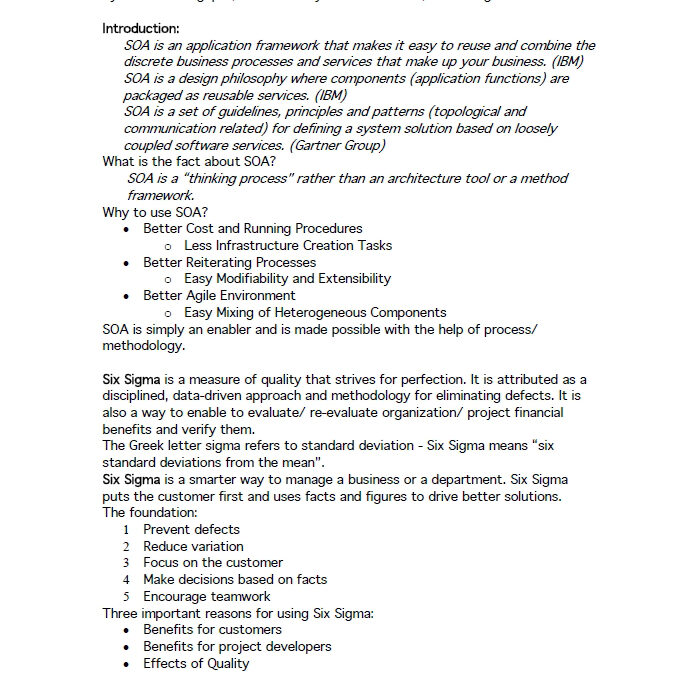
SOA with Six Sigma Methodology: A Process for E-business Development
SOA is a “thinking process” rather than an architecture tool or a method framework.
Six Sigma is a measure of quality that strives for perfection. It is attributed as a disciplined, data-driven approach and methodology for eliminating defects. It is also a way to enable the evaluation / re-evaluate of an organization / project’s financial benefits and to verify them.

BPMS Watch: What is Case Management?
As I prepare to update my BPMS Report series, task number one is taking a fresh look at the process types or “use cases” that guide the evaluation analysis.
